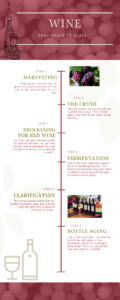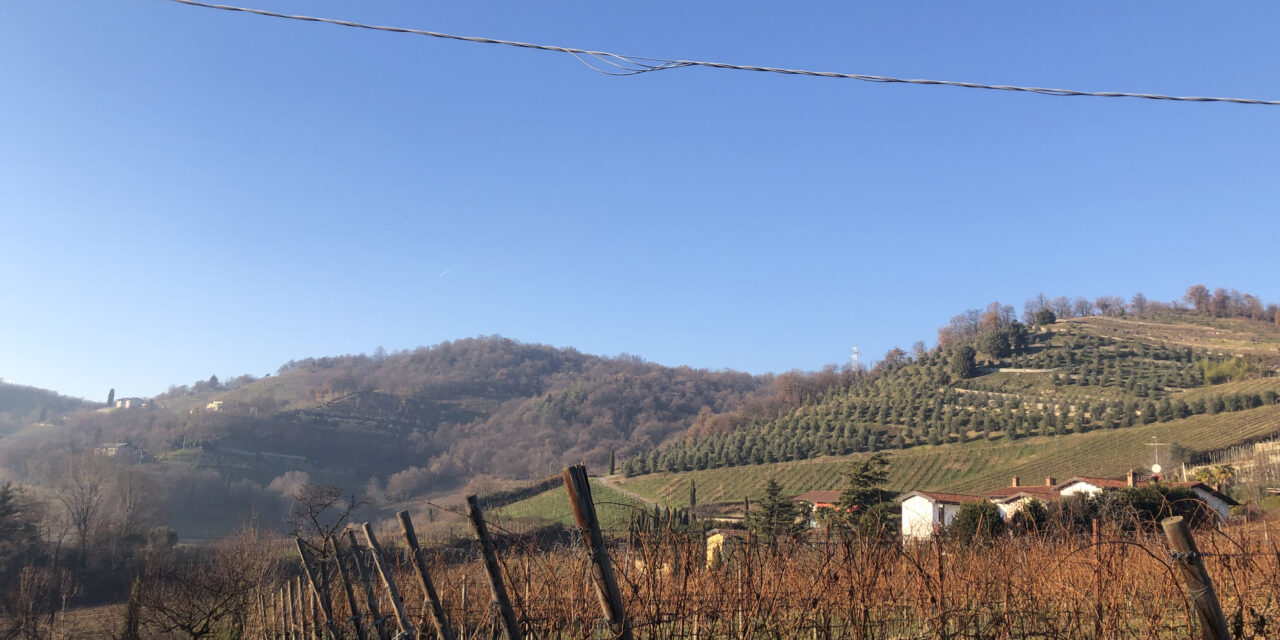Strolling through the Italian landscapes, you come across the authentic villages with old men chattering on a bench, narrow streets where you can barely pass someone, the vespas racing, olive trees and the delicious gelato. But something else that is very attractive to many people, is the centuries-old tradition of growing wine. The extensive vineyards with rows of grape plants growing white or red grapes. With in between a winery where the grapes are processed to an actual red or white wine. It pictures an ideal picture that attract many tourists to Italy. Especially during the summer, then the vineyards are at their most beautiful. Wine tours, tastings and workshops attract a lot of tourists to the country. The wine industry is important for Italy, but the industry is facing challenges, with the ever-growing problem of climate change.
Wine making is often seen as a scientific process or some kind of art, with a lot of different aspects and stages. There are a lot of aspects to create it, and the combination of these aspects are essential to create a fine wine. The combination exists of soil, tradition, climate and the environment. This combination makes it perfect, but it also depends on what kind of wine a farmer wants to produce, for a red wine another kind of soil is used then for a white wine. Another important thing to remember is the situation where the vineyard is set in, for example the temperature, the sun and the surface. The environment and the climate can be highly affected by climate change. One thing that changes is the increasing temperature. Justine Vanden Heuvel is a professor at the Cornell University and researcher about vineyards and winery. ‘There are two things to think about. The effect of the temperature rise on the vineyard and the effect on the grape. As far as the vineyard is concerned, the need for water increases as the temperature rises. A vineyard uses transpiration to cool itself. When we look at the grape, temperature plays an important role in determining the composition of the fruit. For example, as the temperature rises, acids are broken down. This is why wines from warm regions naturally contain less acid than wines from cool regions. Although the acids can be adjusted in the winery. However, it is the winemakers who face more problems in the winery. Warmer temperatures, or less water in dry climates, for example, can lead to a higher sugar concentration in the grape. This is then converted into alcohol during fermentation.’ The taste of the wines and the composition of the grape are thus affected by the temperature increase.

Another consequence from climate change is that the wine map is expanding. Due to the temperature differences now compared to many years ago, in many more countries and areas grapes can be grown. But the disadvantage is that other countries struggle with the not so ideal circumstances. Some regions couldn’t grow grapes because the weather was too cold. But the last years, a shift is noticeable. For example, all over England are now wines produced, similar to champagne from France. Even in Scandinavia are now vineyards that grow Griesling grapes that are converted into wines. But the question is of these wines catch the consumer. ‘There is also the issue of consumer preferences. Consumers purchase specific wines because they have specific characteristics.’ Says Vanden Heuvel. People are simple, they like some wines and they don’t like other wines. It might be a change to serve wines produced from the lesser-known regions.
For now, the conditions in the north of Italy are still optimal to grow grapes and therefore produce wines. Italy is still seen as one of the biggest wine producers in Europe. All regions in Italy have their own kind of traditions and specialties. For example, Friuli in eastern Italy is known for producing white wine and therefore a specific kind of soil is used. But for a red wine in another region, the farmers may use another soil to grow darker grapes. The region from Bergamo, Lombardy, in the north of Italy, is known as the economic motor of Italy with a lot of factories, cities and companies. But it is also a region where many wines are produced. Tourism is still and will be important for the wine region. According to Alessandra Pitocchi from Visit Bergamo, the tourist organisation is promoting the wine region. ‘It is an important piece of our culture and work here, so with the campaign ‘East Lombardy’ we promote the wine in the surroundings from Bergamo.’ The east of Lombardy is formed by the provinces Bergamo, Brescia, Mantua and Cremona. Wine lovers can indulge themselves in this region, it has a lot to offer. Bubbled wine, white wine and red wines. Moscato di Scanzo is a wine produced only in Scanzorosciate, just 20 kilometers from Bergamo. It is a Muscat wine, made with dark-skinned grapes and has a warm red color. It is the first wine in Bergamo that has gotten the status DOCG. In Italy, there are four statuses that vary in quality, DOCG is the highest quality a wine can have. This wine is the only black-grape Moscato in Italy and has a sweet taste and combines best with blue cheeses and chocolate.




